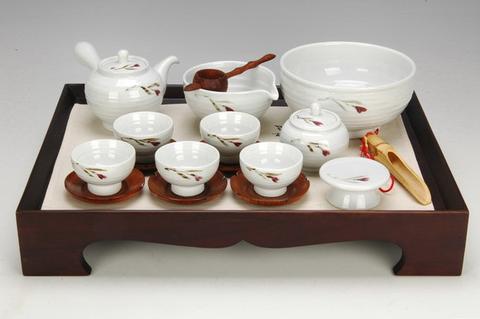Continuing our theme of Korea, we are now turning to their use of tea ware. This will be a brief little post as I have been researching, and haven’t found much of anything regarding the history behind some of their tea ware designs. I will continue to update this post as I get more information.
But enjoy the post nevertheless!
Most of the Korean tea ware is made for their special Korean tea ceremonies. And because Korean tea ceremonies follow the seasons, their china, ceramics, and metal ware vary. Tea equipment was mostly ceramic, as porcelain was rare, with imperial porcelain with dragons the rarest. The appearance of the bowls and cups are naturalistic, according to religious influence.
Summer tea equipment consists of “katad” bowls which are five centimeters tall and twelve centimeters wide. With these dimensions maximum surface area is exposed to aid in the cooling of the boiled water. Hot water would be poured in the bowls, allowed to cool, then poured into the tea pot. This is done because it is assumed that pouring boiling hot water directly on the tea leaves extracts too much tea from leaves, resulting in a bitter tea. In the summer time, tea would be usually taken cool.
Autumn and winter tea equipment had more narrow taller bowls. They appear somewhat similar to the “irabo” style. The taller and narrower structure is used so that the bowls would maintain heat. The same process of having the hot water be poured into the bowls before being poured into the tea pot, which would be heated. This time the tea would be taken hot.
What I found quite interesting was how the water would be poured first into a small bowl, then into the tea pot. Usually when I make a pot of tea, I would pour the boiled water directly into the tea pot.
I hope you enjoyed this and hope all of you are staying healthy and safe.
Have a great week,
Alyssa

Recent Comments